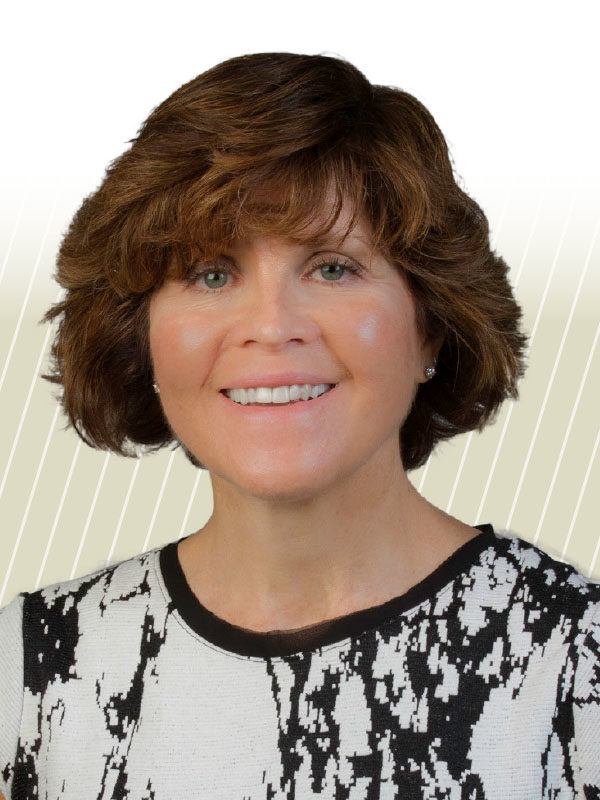“I’m a big believer in community colleges,” says Julia F. Guiney, executive director of human resources at the College of Lake County, Grayslake, Ill. “My mother earned an associate degree when she was in her 50s, and it really transformed her life, which made an impression on me.”
Guiney got her start in higher education at William Rainey Harper College, a community college in Palatine, Ill., where she worked from 1987 to 1995. In 2014, after almost two decades in the private sector, she found her way back to another community college.
How are you currently using data in your human resources decision making at the College of Lake County?
Data let me know if the institution is on track or if we have a problem that could distract us. For example, suppose the turnover data indicate that a certain demographic of employees is leaving the institution at a faster rate than other demographics. I would then take a deeper dive into the data to find out why. Is the turnover coming from a certain position or department? Do I have other data sources, such as exit interviews, that might tell me more?
Based on what I learn, I may decide to incorporate more support steps in our initial onboarding process or find mentors for new hires.
Let’s talk about your onboarding program. What does it involve?
We take the first day and a half to go through our HR orientation, which includes [information about] benefits and compliance. On Day One, we also want new employees to hear about our mission and core values, which are learning, integrity, quality, service, accountability, and diversity. If they don’t hear about our values from the start, new employees may get the sense that they are not important.
As part of the onboarding process, HR coordinates with the hiring manager to ensure that the new employee has a training plan. We then circle back and make sure that the manager has 30-day, 60-day, and 90-day milestones to chart the employee’s progress during the training period.
What trends have you noticed in human resources?
In addition to the obvious—the multiple generations in the workplace and the implications that has on employee engagement—I’ve seen a real push for the goal of truly embedding diversity and inclusion in the culture of organizations. To create a welcoming environment requires more than just lip service.
Another trend is incorporating technology in all areas of our work—everything from how we deliver training to constant connectivity, which has its own set of issues. While always being connected allows the ability and flexibility to work remotely, we still need to make sure employees have downtime and a work/life balance.
I’ve also noticed an increase in nontraditional workers. In addition to regular full- and part-time employees, institutions are hiring more contingent workers or contractors. For example, if we have a short-term project, we might hire a consultant or a contractor to handle it.
What steps are you taking, if any, to contain costs for benefit programs?
We are educating employees about cost drivers in our medical plans, because that’s where you find some of the biggest spend. For example, we want to help employees understand that in non-life-threatening situations, before going to the emergency room, they might want to use the 24-hour nurse hotline, go to a mini-clinic, or call their primary care physicians.
We also emphasize wellness initiatives. We are asking questions, such as, “What’s in our vending machines?” and “Are we taking stairs instead of the elevators?”

In your opinion, how can HR support long-term organizational success?
By moving beyond the transactional. Historically, HR has handled benefits administration, processed compensation, and helped to hire people. We need to go beyond that to implement programs and strategies that are aligned with the mission of the institution, to help reach strategic goals. This includes programs designed to attract a diverse and talented workforce. We need to make sure that we have the right people in the right places at the right time, and that they are trained and motivated.
Our employees represent 75 percent of our budget, with compensation and benefits. We need to focus on our employees as an asset. We need to be a true partner with academic affairs and student development, and we must take the time to understand their needs and goals to help them be successful through people and programs.
What is the most common complaint that employees have about their supervisors?
Lack of communication. Typically, managers aren’t clearly communicating their expectations, goals, or news about what’s coming up, which can lead to frustration among employees.
When employees come to me, I coach them on how to approach their supervisors and convey what it is that they need, whether it’s information, tools, or a different process.
What advice do you have for those HR professionals who are in early stages of their careers at an institution?
My biggest piece of advice for them is to understand how their institution operates; know the mission, vision, values, and goals, and then identify ways in which HR can help support them.
I would also suggest that you get to know your employees at every level, understand their challenges, and look for ways to help them be effective. We need to prove our value, and show that we can help employees and the institution to be successful.
I realized early on in my career that to succeed in human resources I needed to check my ego at the door. This job is not about me. It’s about our employees and our students.
Tell me more about your family and your recent trip to Europe.
I have three children, ranging in age from 16 to 24 years old.
Recently, my husband Elliott and I went to Portugal and visited three areas: Porto, Algarve, and Lisbon. We were able to see some of the smaller villages and their marketplaces, where people sell everything from shoes to cheese. At every meal, we had great bread, cheese, olives, and, of course, really good wine.
We enjoy learning about other cultures and cuisines, and how and where people work. One of the things we find to be true: People are more alike than different.
Share something about yourself that your co-workers don’t know.
They may not know that I rode a motorcycle until I had my first child. I haven’t been on one since, but I still have my license. When I was pregnant, I think I realized my sense of mortality. I wanted to make sure my child and I were safe.
MARGO VANOVER PORTER, Locust Grove, Va., covers higher education business issues for Business Officer.



